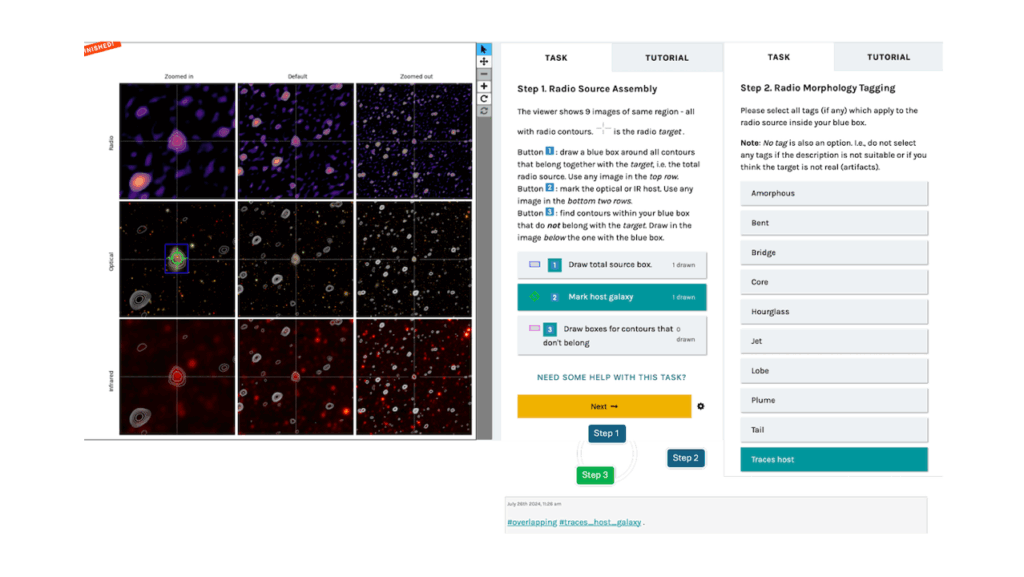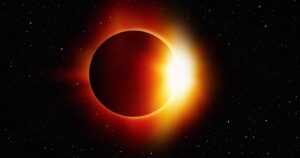
The Evolutionary Map of the Universe (EMU) survey, conducted with the Australian Square Kilometre Array Pathfinder (ASKAP), is set to revolutionize our understanding of radio galaxies, active galactic nuclei (AGN) duty cycles, and cosmic structures. A groundbreaking approach combining artificial intelligence and citizen science aims to overcome the challenges of cataloging extended radio sources, a task where traditional methods have struggled.
The EMUCAT catalog, known for its efficiency in identifying compact radio sources, has faced difficulties with extended objects, necessitating innovative solutions. Enter the Radio Galaxy Zoo: EMU (RGZ EMU) project, which proposes a comprehensive framework leveraging both machine learning and the power of citizen science to identify approximately four million extended sources within the EMU survey.
Innovative Framework for Cataloging
The RGZ EMU project introduces a novel workflow designed to enhance the cataloging of extended sources. The process involves a three-step workflow, where the first two steps are mandatory, and the third step is optional. This setup allows for flexibility and precision in data processing, ensuring that the most complex and significant sources are accurately identified and cataloged.
According to the project collaborators, including Hongming Tang and Eleni Vardoulaki, the framework is further strengthened by incorporating cross-matched external data from other surveys such as POSSUM and WALLABY. This integration is expected to significantly improve the accuracy and comprehensiveness of the EMUCAT catalog.
Citizen Science Meets Machine Learning
The RGZ EMU project is a testament to the power of combining human intuition with machine efficiency. Citizen scientists play a crucial role in the initial stages of data processing, where they help identify and classify images based on complexity and source size. This human input is then fed into machine learning algorithms, which refine and expand upon the initial classifications.
A schematic diagram of the proposed framework illustrates the process. Sample images are categorized based on their complexity and size, with those meeting the selection criteria being further analyzed. The use of gradient arrows in the diagram symbolizes the dynamic and iterative nature of the framework, where continuous feedback and refinement are integral to the process.
Implications for Astrophysics Research
The implications of this project extend far beyond the immediate goals of the EMU survey. By successfully cataloging extended radio sources, researchers can gain deeper insights into the lifecycle of galaxies and the large-scale structure of the universe. This, in turn, could lead to breakthroughs in our understanding of cosmic evolution and the fundamental laws governing the universe.
Experts in the field have praised the RGZ EMU project for its innovative approach and potential impact. “This is a significant step forward in astrophysics research,” said a leading scientist in the field. “The integration of AI and citizen science not only enhances our data processing capabilities but also democratizes scientific research, allowing people from all walks of life to contribute to groundbreaking discoveries.”
Looking Ahead
The RGZ EMU project is part of a broader trend in scientific research, where interdisciplinary approaches and collaborative efforts are increasingly seen as essential to tackling complex challenges. As the project progresses, it is expected to set new standards for how large-scale surveys are conducted and analyzed.
Meanwhile, the project’s success could inspire similar initiatives in other fields, highlighting the potential of AI and citizen science to transform research methodologies across disciplines. As the RGZ EMU project continues to unfold, the scientific community and the public alike will be watching closely, eager to see what new discoveries await.
For more detailed information, interested readers can refer to the original conference paper accepted for the International Conference on Machine Learning for Astrophysics (ML4ASTRO2), authored by Hongming Tang and Eleni Vardoulaki, among others. The paper is available on the arXiv platform under the citation arXiv:2506.16138.





